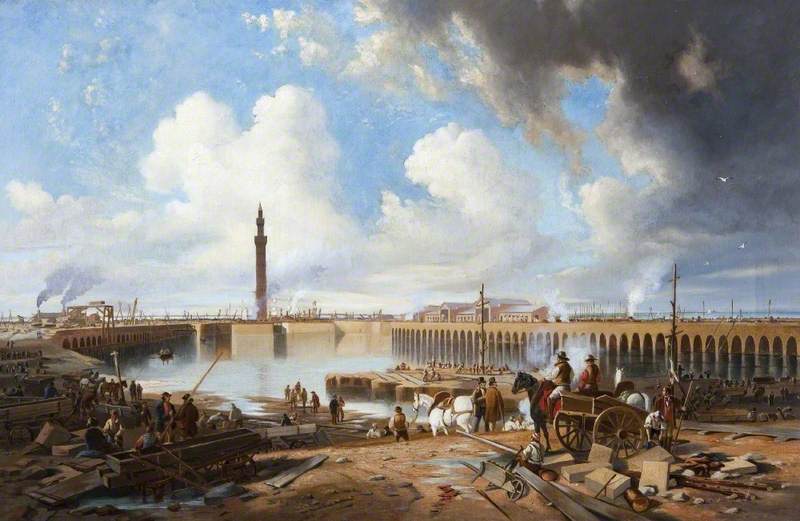A BRIEF HISTORY OF GRIMSBY DOCKS
Grimsby is a long-established port on the east coast of England, with a population (together with Cleethorpes) of around 120,000. The population of North East Lincolnshire is approximately 157,000.
Since mediaeval times, fishing has been important to the town, but it was during the second half of the 19th century that the fishing “boom” began.
“Gordon Jackson…described the development of Grimsby’s port in the 1840s and 1850s as representing the ‘first truly modern dock in Britain’. This claim is based on the almost wholly novel and comprehensive application of communication and engineering technologies in the creation of the Royal Dock and its subsequent neighbours. This innovation was possible, of course, because the Lincolnshire landowners who decided to speculate on Grimsby’s economic potential by means of a merged dock and railway company were doing so at a time of enhanced technological possibility, but also because the chosen location, being hitherto undeveloped, offered a clean slate. In fact, the port depended for its success on the integration of docks with a rapid transport system.” (Matthew Whitfield, English Heritage, 2009.)

Painter | John Wilson Carmichael (1799-1868)
By 1851, the population of Grimsby had doubled, to 8,860, and during the latter half of the century there was an extensive building programme, one result of which was the laying out of the East Marsh district (a working-class, residential area, on either side of Freeman Street) immediately to the south and south-east of the docks. Throughout the 1950’s and 1960’s Freeman Street was a bustling hub of commercial activity; the shops, pubs, cinemas and market thrived because of the fishing industry. As the industry declined, so did this part of the town, and the East Marsh is now one of the most deprived wards in the country.
However the Grade II* listed Grimsby Ice Factory – engine of the town’s prosperity in the first half of the 20th century – remains, dominating the historic dock peninsula, a landmark for the town.
To the north of the Ice Factory lies the historic Victorian dock area known locally as “The Kasbah”. “The landscape of docks, quays, transport systems and specialised building types within the Fish Dock ‘peninsula’ and adjacent land forms the most important representation of the industrial-scale fishing trade in England. This landscape and its constituent buildings survives with a high degree of integrity and forms a unique environment of great historic interest.” (Matthew Whitfield, English Heritage, 2009.) The Kasbah contains the largest concentration of fish smokehouses in the country (Grimsby Traditional Smoked Fish was awarded European Protected Status in November, 2009), in addition to buildings that in the past housed chandlers, rope works, banks, a post office, cafes, pubs, even a butcher. The Kasbah was often referred to locally as “a town within a town”.

In recent times, many of these 19th century buildings have fallen into disuse, and consequently into disrepair. Of approximately 90 buildings remaining, around 73 per cent are unoccupied as of January 2019. This is attributable to a combination of the general decline of the fishing industry, and the unsuitability of these buildings for modern food processing. A significant amount of demolition has taken place, notably that of the Cosalt Buildings in 2017, which saw the loss of the entire west side of Fish Dock Road. SAVE Britain’s Heritage had brought a high court action to try to prevent the demolition, but were unsuccessful.

However, better news was to follow. In October 2017, by agreement between landowners Associated British Ports (ABP), North East Lincolnshire Council (NELC) and Historic England (HE) the Kasbah was designated a Conservation Area. In 2018, The Kasbah and Ice Factory were included in Historic England’s Greater Grimsby Heritage Action Zone (HAZ), a five year programme which, in tandem with the Greater Grimsby Town Deal (a programme of public/private investment over 10 years), will bring further support and funding to encourage the reoccupation of these historic buildings. And in 2019 NELC will receive match funding from the Cultural Development Fund to help establish a creative hub and support services for creative/cultural businesses within the Kasbah.
